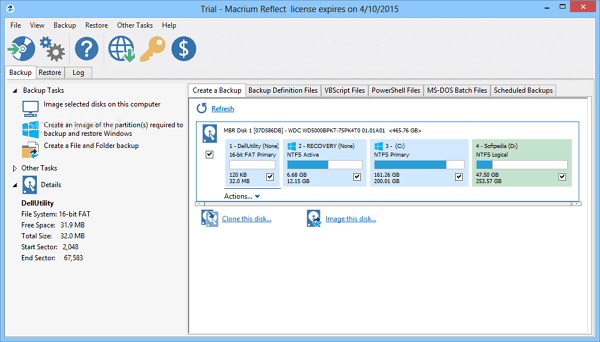
All the NTFS file system structures are copied to the target disk and any that do not exist or have been modified on the target disk cause the data records for each NTFS file or object to be copied as well. The two file systems are first verified that they originated from the same format command and then the target NTFS file system structures are analyzed for differences. The NTFS file system resident on the clone source is compared with file system on the target disk. The advantage of this is obvious, RDC offers similar a performance increase as an Incremental disk image offers over a Full image and enables regular clones to be a viable and fast DR solution. We wanted to build a clone solution that would effectively and rapidly copy only the differences between the source and target file systems. You can modify the size of each partition to fit the new disk if required.Īs with Rapid Delta Restore (RDR) the concept of RDR has been something that has been thought about for quite some time here at Macrium Software. In this example, there is 400MB of free space after the copied partition. This is the default behavior.Īlternatively, drag the partitions you want to clone, the red arrow below shows this. If you do not want to modify the order or size of partitions of the clone, click Next. In this case, there is only one disk available. Select the hard disk you wish to clone to. In the wizard that opens Click Select a disk to clone to.Select the disk you wish to clone in the main application window and Click 'Clone this disk'. See also: Bare metal restore of a Dynamic disk system After the clone operation you can leave the disk as a 'Basic' disk or convert to Dynamic using the Windows Disk Management Console.

To convert Dynamic Volume(s) to standard partitions, select an unformatted or an MBR/GPT basic disk as the destination and use 'Drag and Drop' to copy the source volumes. This can be achieved using the Windows Disk Management Console to convert one or more physical disks to Dynamic.Ī destination Dynamic Volume cannot be resized so the 'Cloned partition properties' link will not be available if the destination is Dynamic. To copy source Dynamic Volume(s) to destination Dynamic Volume(s) you must prepare the target as Dynamic and format the destination volume(s) in advance of the clone operation. The partition selection check boxes and 'Copy selected partitions' link will not be available. Therefore, Dynamic Volumes must be dragged and dropped to the destination.

If your source disk contains Dynamic Volume(s) then the background will be orange and the link will show 'Copy Dynamic Volumes.': Because of this, Dynamic volume file systems are copied not disk partitions. A Dynamic volume is a logical abstraction of the underlying physical disk and may be striped or extended over multiple physical disks.


 0 kommentar(er)
0 kommentar(er)
